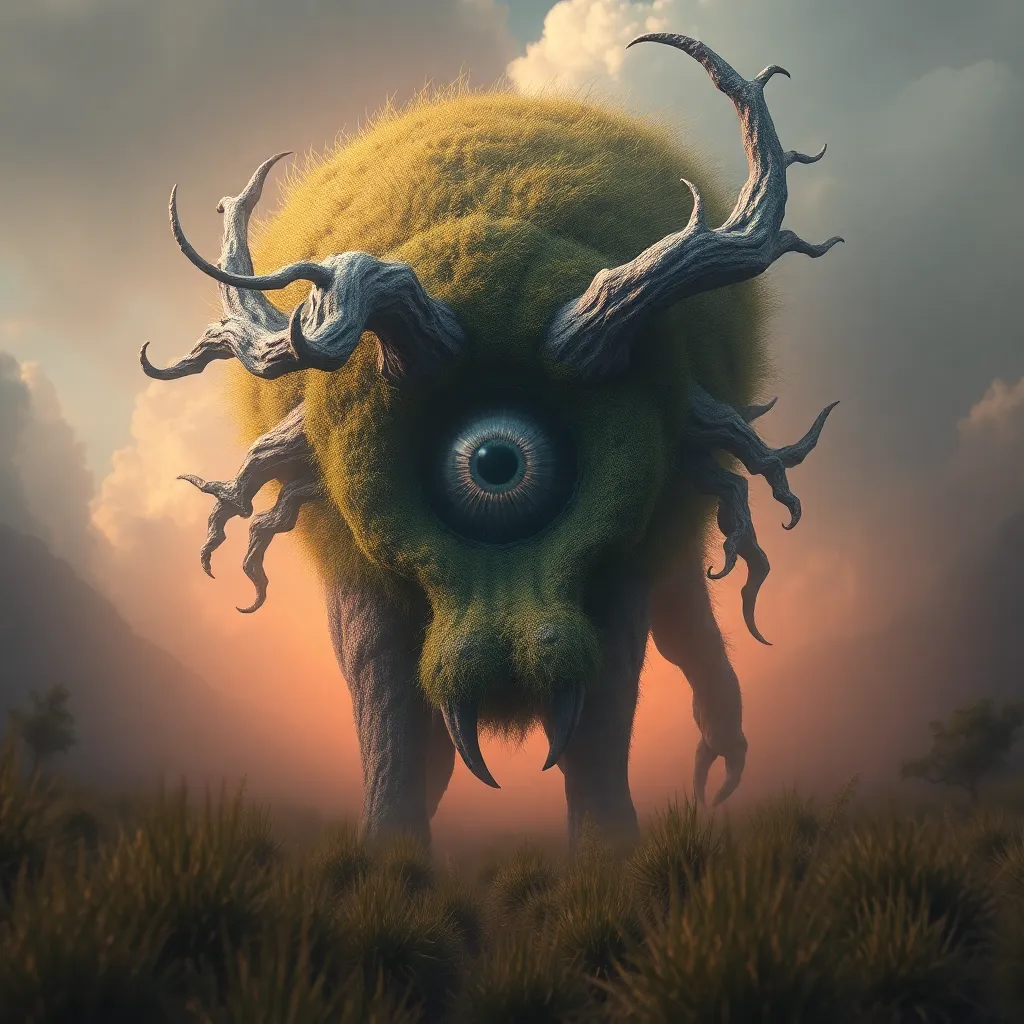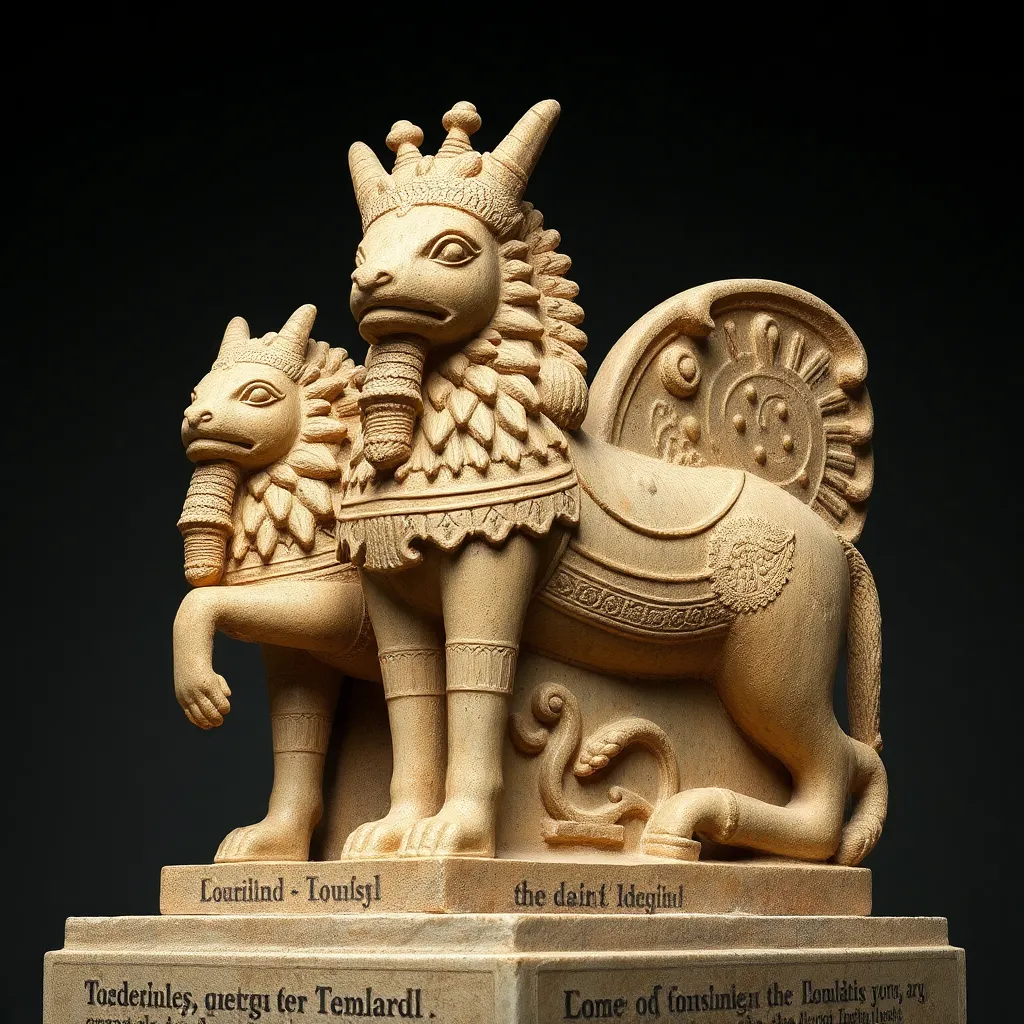The Cyclops as a Metaphor for Nature: Exploring the One-Eyed Giant as a Representation of the Wild
I. Introduction
The Cyclops, a figure from ancient mythology, has captured the imagination of countless generations. This one-eyed giant, often depicted as fierce and uncivilized, serves as a powerful metaphor for nature itself. The significance of the Cyclops extends beyond mere storytelling; it embodies the duality of nature, representing both its destructive and nurturing aspects. This article aims to explore the Cyclops as a metaphor for the wild, examining its historical context, symbolic interpretations, and relevance in contemporary discussions about nature and humanity.
II. Historical Context of the Cyclops in Mythology
The origins of the Cyclops myth can be traced back to various ancient cultures, each interpreting the giant in unique ways. In Greek mythology, Cyclopes were often associated with the creation of thunderbolts for Zeus, highlighting their role as powerful beings. Other cultures, such as the Romans and the Egyptians, also featured one-eyed giants, though their characteristics varied significantly.
In Homer’s “Odyssey,” the Cyclops Polyphemus becomes a symbol of the wild and untamed nature that Odysseus must confront. The encounter between Odysseus and Polyphemus illustrates the struggle between civilization and the primal forces of nature. This myth serves as a cautionary tale about the dangers of underestimating the wild, emphasizing the Cyclops as a representation of the unknown and uncontrollable aspects of the natural world.
III. The One-Eyed Giant: Symbolism and Interpretation
The single eye of the Cyclops has been the subject of various interpretations. It symbolizes a narrowed perspective, representing a limited understanding of the world. In contrast, it can also be seen as a metaphor for focus and intensity, highlighting the Cyclops’ primal instincts.
The relationship between vision and perception in nature is crucial to understanding the Cyclops. The one-eyed giant can be viewed as a reflection of human perception of the wild, often dimmed by fear and misunderstanding. This limited vision underscores the challenges humanity faces when trying to grasp the complexities of nature.
IV. Nature’s Duality: Destruction and Nurturing
The Cyclops embodies nature’s duality, showcasing both its ferocity and nurturing qualities. As a representation of nature’s destructive power, the Cyclops can be associated with natural disasters such as earthquakes, storms, and wildfires. These events, while devastating, also play a vital role in the regeneration of ecosystems.
The nurturing aspects of nature, represented by the Cyclops, can be seen in the ways natural cycles promote growth and life. The tension between destruction and nurturing reminds us that nature operates on a continuum, where chaos can lead to renewal.
Case Studies: Natural Disasters and Their Dual Role in Ecosystems
- Wildfires: Often seen as destructive, they are essential for the regeneration of certain plant species.
- Earthquakes: Can create new landforms and alter ecosystems, leading to diverse habitats.
- Floods: While damaging, they can deposit nutrients that enrich soil and support new growth.
V. The Cyclops in Literature and Popular Culture
The Cyclops has evolved in literature and popular culture, often appearing as a metaphor for the wild and untamed. In contemporary literature, the Cyclops represents humanity’s struggle with nature, reflecting our fears and desires regarding the natural world. Authors often use the figure of the Cyclops to explore themes of isolation, power, and the primal instincts that reside within us all.
In films and visual arts, the Cyclops continues to be a prominent figure, often depicted as a monstrous but misunderstood character. This portrayal highlights the complexity of nature, suggesting that fear and awe coexist in our relationship with the wild.
VI. Environmental Implications of the Cyclops Metaphor
The Cyclops serves as a powerful warning against environmental neglect. As humanity continues to exploit natural resources, the metaphor of the Cyclops highlights the consequences of our actions. Nature’s power and unpredictability are emphasized through the Cyclops, urging us to respect the environment and acknowledge our interconnectedness with it.
In environmental activism, the Cyclops metaphor can be used to inspire action. It reminds us that while nature can be brutal, it is also essential for our survival. Advocates often draw on this imagery to emphasize the urgency of protecting natural ecosystems from destruction.
VII. The Psychological Perspective: The Cyclops and Human Nature
The Cyclops also reflects humanity’s relationship with nature on a psychological level. It represents our primal instincts, illustrating the ongoing struggle between civilization and the wild. The one-eyed giant embodies the fears and desires that arise from our encounters with nature, revealing the complexities of human behavior in response to the untamed aspects of the world.
The psychological impact of the wild on human behavior is profound. Nature, in all its ferocity and beauty, can evoke a sense of awe and fear, influencing how individuals interact with their environment. The interplay between civilization and the untamed aspects of nature is a recurring theme in psychology, highlighting the need for balance and understanding.
VIII. Conclusion
In summary, the Cyclops serves as a multifaceted metaphor for nature, embodying both its destructive and nurturing qualities. The historical context, symbolic interpretations, and relevance in contemporary culture illustrate the enduring significance of the Cyclops in our understanding of the natural world.
As we navigate the complexities of our relationship with nature, the Cyclops reminds us to embrace the wildness within and around us. By acknowledging the Cyclops as a representation of nature, we can foster a deeper appreciation for the intricate balance that exists between humanity and the natural world.



